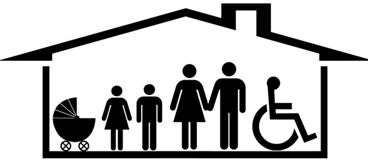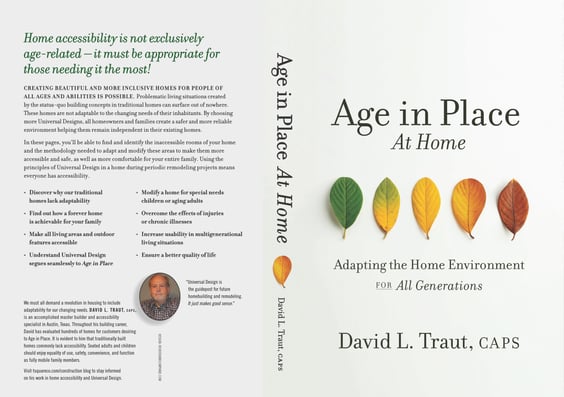Are You And Your Family Prepared For The Future?
The sudden onset of a disability can significantly impact a family's daily lifestyle in various ways:
- Changes in caregiving responsibilities: Family members may need to take on caregiving roles to support the disabled individual, which can require time and adjustments to daily routines.
- Financial considerations: The cost of medical expenses, assistive devices, and home modifications can strain a family's finances.
- Mobility and transportation: Depending on the disability, transportation options may need to be adapted, which can affect school, work, and social activities.
- Home modifications: The need for wheelchair ramps, accessible bathrooms, and other modifications may be necessary, impacting the home environment.
- Emotional and psychological impact: Family members may experience stress, emotional strain, or guilt as they adapt to the new circumstances.
- Social life: The family's ability to participate in social events and outings may change due to the disabled family member's needs.
- Education and employment: Family members may need to adjust their work or school schedules to accommodate caregiving responsibilities.
- Healthcare management: Coordinating medical appointments, therapies, and medications becomes a part of the daily routine.
- Community support: Families may seek support from local disability organizations or support groups to help navigate these changes.
- Recreation and leisure: Finding accessible recreational activities can be a challenge, impacting the family's leisure time.
It is essential for families, prior to facing such life challenges, to take proactive measures toward universally preparing their inaccessible home for future evolving personal needs. Therefore, all periodic home remodels should include elements of Universal Design in every area of your home. This positive action will alleviate or lessen the affects of many of the sudden impactful changes brought about in the aforementioned list. The family should also communicate openly, seek external support, and work together to adapt to the new lifestyle and ensure the well-being of all members.
The constantly evolving concept known as Universal Design for home building and remodeling is catching on nationwide and has been for several years as a sign of the times. Universal design in housing refers to the concept of designing living spaces and homes to be accessible and usable by people of all ages, abilities, and backgrounds. The goal is to create environments that accommodate a wide range of individual needs and preferences without the need for costly or specialized modifications. Universal Design techniques used in building or remodeling makes a home more accessible to all regardless of their mobility or adaptive abilities and at any age.
An evolution of new products used for disability home modifications is making Universal Design homes more accessible and has finally come about in the remodeling industry. These new advances in accessible home remodeling not only keep the living environments safer but will not compromise the home's aesthetics or resale value. Furthermore, this new way of thinking offers flexibility to add accessories now and later to those planning ahead or to the end user. It also provides for a wide range of human performance characteristics for the way people use spaces within their homes including well integrated usability features.
There are seven criteria which must be met to be considered a Universal Design no matter which area of the home you are referring to. Any design must be equally useful to everyone, have flexibility in usefulness, be simple and intuitive, be perceived by everyone, have a tolerance for error, require little physical effort, and it must maintain an adequate area for approach and use. Any complexity or discriminating attribute to a design will doom it in terms of being considered universal in nature.
Universal Design Is Inclusive Design For All!

Universal design aims to create inclusive living environments that promote independence and quality of life for everyone, including individuals with disabilities, older adults, and families with young children. It's an important concept for promoting accessibility and social inclusion in housing design.
While Universal Design is a human centered concept making up an overlapping design philosophy, this concept of design came about by the recent disability movement of our aging population and the quality of life created by an increased user concept. An evolution in building ideas which deals with a larger all-inclusive society rather than a select group will make our homes more livable and sustainable in the future. Small changes can make a great difference with practice and understanding of the antiquated architecture which has evolved as the norm. It has been demonstrated that a need for functionality and usability has been lacking within our existing home inventory and the standards and codes from our municipalities must catch up with the needs of our society as a whole. When everyone can benefit it just makes common sense. Observing other aging groups in our society and the personal perils they face has finally brought about a new way of thinking about the living environment. Universal Design is beneficial to all abilities and ages offering practical solutions for specific differences in people. We have long needed a new vision representing a home that works for everyone and this attitude is becoming the new reality stemming from a revolution. This new building revolution, using Universal Design, is helping to create new accessible homes along with ways to make the older homes more accessible.
Universal Design does not equate to accessibility design even though they both are concerned with ergonomics and human function issues. The ADA guidelines for accessibility were created as a means to help those people with extreme disabilities within our society who are a narrow and specific cross section of the masses. A Universal Design approach proactively takes into account moderate impairments or disabilities, temporary health conditions, and the varying abilities of anyone within a home regardless of their age or size. In other words, an ADA accessible home is designed for the one person exhibiting a disability, whereas a Universal Design home is designed for everyone and avoids kneejerk reactions to later seen health issues. Features like one story design, bedrooms and bathrooms on the ground floor, natural day lighting through larger windows and skylights, and wider doors and hallways appeal to users of all ages. With baby boomers eyeing a future where they'll Age in Place and younger people renovating older homes, the Harvard Joint Center for Housing Studies is anticipating healthy growth for the U.S. home improvement market through 2025.

T-Square Company in Austin, Texas has been offering design/build accessibility projects to their clients incorporating the principles of Universal Design for over twenty-five years. We specialize in Universal Design Ideas. David L. Traut, CAPS, the owner-president of T-Square Company is certified in Universal Design. He has published a book entitled "Age in Place at Home :Adapting the Home Environment for All Generations" which is available through Amazon. The book covers identifying and overcoming common accessibility shortcomings within a traditional home. Within it's pages, David takes you through a home interior showing you how and where to apply Universal Design aspects in every room. Since Universal Design seamlessly segues into Aging in Place needs, it is a how-to book worth reading. Incorporating Universal Design principles into your home facilitate future Aging in Place goals, while comfortably addressing the diverse needs of all ages and mobility levels living within your home at any time. This book is a great reference for aging homeowners, parents of special needs children, homeowners moving in their elderly parents, and multi-generational living situations. Always remember, home accessibility is not exclusively age-related, but it must be appropriate for those needing it the most.










